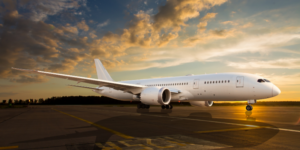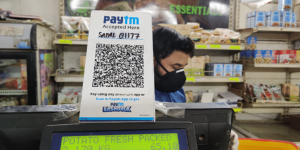Imagine covering the bustling Mumbai-Pune stretch in time than it takes to binge half a 40-minute episode of your favorite show! This audacious dream is inching closer to reality with IIT Madras successfully testing India’s first Hyperloop track. This feat places India on the global innovation map for one of the fastest-growing transportation revolutions. Let’s delve into the technology, progress, and impact of this cutting-edge innovation.
Hyperloop: The Futuristic Transport
Hyperloop is not just a buzzword; it’s a paradigm shift in mobility. Conceptualised by Elon Musk in 2013, the Hyperloop system uses a pod traveling through low-pressure tubes at jet-like speeds, often exceeding 1,200 km/h. Think of it as a blend of an airplane’s speed and a train’s convenience.
Key components include:
- Low-Pressure Tubes: Sealed to minimise air resistance.
- Magnetic Levitation (Maglev): Pods “float” on magnets, eliminating friction.
- Linear Electric Motors: Propels the pod smoothly and efficiently.
These features combine to deliver unparalleled speed and efficiency, with zero direct emissions—making Hyperloop the ultimate in green transit.
IIT Madras’ Historic Milestone

On December 6, 2024, IIT Madras unveiled a 410-meter Hyperloop test track, a first in India. The Avishkar Hyperloop team, supported by TuTr Hyperloop—a startup under the institute’s incubator program—led this ambitious project. This track serves as a prototype to validate Hyperloop’s feasibility in Indian conditions. While it’s shorter than the operational tracks in countries like the U.S. or China, this is a promising start for India.
Union Railway Minister Ashwini Vaishnaw commended the initiative, highlighting how it aligns with India’s goal to emerge as a global leader in green transportation.
The Mumbai-Pune Hyperloop Dream
The Mumbai-Pune Hyperloop project aims to slash the travel time between these cities from the current 3.5 hours by train to just 25 minutes or less. The proposed corridor would connect central Pune to Mumbai, with a critical stop at the upcoming Navi Mumbai International Airport. Not only will this bolster regional connectivity, but it will also redefine urban mobility by reducing road congestion and cutting greenhouse gas emissions.
This route could serve over 26 million passengers annually, with a projected economic impact of $55 billion in terms of time savings and operational efficiency.
Hyperloop on the Global Map
While India is celebrating this milestone, other nations are making significant strides:
- United States: Virgin Hyperloop conducted successful passenger tests in 2020, achieving speeds of 387 km/h.
- Switzerland: Swisspod recently tested its scaled-down model, aiming for operational use by 2030.
- China: With a 93-mile vacuum tube planned between Shanghai and Hangzhou, China is racing to make commercial Hyperloop a reality.
These global advancements provide valuable lessons for India, particularly in safety, scalability, and regulatory frameworks.
Challenges on the Horizon
Hyperloop isn’t without its hurdles. Key challenges include:
- Infrastructure Costs: Building low-pressure tubes across terrains is expensive. For example, the Mumbai-Pune Hyperloop is projected to cost ₹60,000 crore ($7.2 billion).
- Regulatory Bottlenecks: The lack of a defined legal framework for Hyperloop complicates implementation.
- Technological Validation: Achieving commercial reliability at high speeds requires rigorous testing.
The Future Awaits
The Hyperloop is more than a transport system; it’s a symbol of humanity’s quest to defy limits. IIT Madras’ successful test track is the first step in a journey that could redefine India’s connectivity. With continued research, government support, and global collaboration, the Mumbai-Pune Hyperloop might soon become a reality.
So, the next time you’re stuck in traffic, daydream about a future where a Hyperloop pod zips you to your destination faster than you can finish your coffee. Welcome aboard the speed train to tomorrow!







![Read more about the article [Funding alert] Carbon-fiber startup Fabheads raises Rs 8 Cr in pre-Series A round led by Inflection Point Ventures](https://blog.digitalsevaa.com/wp-content/uploads/2021/05/Imagezzro-1621404807361-300x150.jpg)


